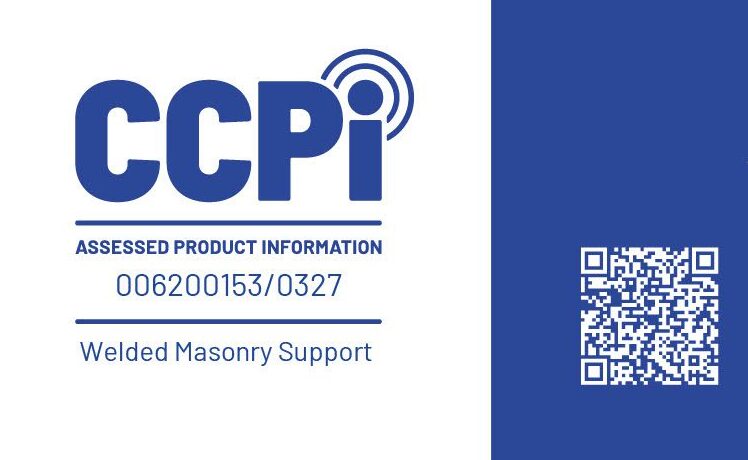Former Commercial Director of the National Federation of Builders Danny Clarke discusses promoting diversity in the construction industry with Showhome Editor Joseph Clarke
What led you to become an advocate for diversity in construction?
My journey for diversity in construction is rooted in a recognition of the untapped potential within our industry. That I guess is the longer answer, yet the reality is that I don’t see that advocating really needs a basis outside of the right thing to do.
The realisation that diversity is not just a social responsibility but also a strategic advantage for the construction sector prompted me to do more. Diverse teams bring a wealth of varied experiences, skills, and insights that can lead to more creative problem-solving, improved decision-making, and ultimately, enhanced project outcomes.
I am passionate about creating a culture where everyone, regardless of their background, feels valued and empowered to contribute their best. I believe we can drive positive change, break down barriers, and shape a more vibrant and resilient industry for the future.
Do you feel positive about the progress that you have seen so far? What are your reasons for this optimism?
I’d say that I feel a sense of cautious optimism about the progress that has been made. While challenges persist, there have been strides toward fostering a more inclusive industry.
Why is that? Well, there is an increased awareness and recognition of the benefits. I see more and more organisations implementing policies and initiatives. Efforts to attract and retain talent from diverse backgrounds are gaining traction too. Yes, there are still those that talk the talk and do little however I do think that is slowly starting to change.
It’s essential to acknowledge that there is still work to be done. Persistent challenges, such as stereotypes, biases, and unequal opportunities, continue to hinder progress and tickboxery happens. Ongoing commitment from all stakeholders, sustained efforts to break down barriers, and the implementation of comprehensive diversity and inclusion strategies are crucial for ensuring continued positive momentum in the construction industry.
Despite progress made over more recent years, what challenges continue to arise when it comes to achieving greater diversity and inclusion in construction?
Despite progress, the industry still faces several challenges in achieving greater diversity and inclusion:
- Persistent stereotypes and bias: stereotypes about gender, race, sexuality, academic status, social economic backgrounds and other factors persists, affecting hiring decisions, promotions, and overall workplace dynamics. Overcoming these biases requires ongoing education and awareness initiatives as well as straight forward calling it out and managing of behaviours.
- Access to opportunities: let’s face it some groups face barriers to entry due to limited access to education, training programs, and networking opportunities.
- Inclusive workplace culture: an inclusive culture is an ongoing challenge. Organisations need to foster environments where employees from diverse backgrounds feel seen, valued, heard, and supported. This includes addressing issues like microaggressions and promoting allyship.
- Retention and advancement: retaining diverse talent and ensuring their progression within the industry can be a challenge. Organisations must actively support the professional development and advancement of all employees including those from underrepresented groups.
- Lack of role models: a lack of visible role models from diverse backgrounds in leadership positions can discourage individuals from pursuing careers in construction. Highlighting success stories and promoting diverse leaders is crucial for inspiring the next generation. There are many role models out there, we just need to recognise more and be better at celebrating achievements.
- Inequities in pay and opportunities: disparities in pay and opportunities exist among different demographic groups.
- Insufficient representation in decision-making: a lack of representation in decision-making roles can impede efforts to address diversity and inclusion effectively. Diverse voices should be included in leadership positions and decision-making processes to ensure comprehensive perspectives.
- Industry perceptions: perceptions of the construction industry as male-majority or unwelcoming to certain demographics can deter individuals from considering careers in construction.
- Lack of data tracking: some may not have robust systems in place to track diversity metrics, making it challenging to measure progress and identify areas that need improvement.
- Resistance to change: resistance to change within established norms and practices can slow down efforts to increase diversity and inclusion.
In what ways do you believe a more diverse workforce contributes to innovation and problem-solving in the construction industry?
A more diverse workforce in the construction industry contributes to innovation and problem-solving in several ways:
- Different perspectives: diversity of thoughts brings together individuals with different backgrounds, experiences, and perspectives.
- Improved decision-making: diverse teams are better equipped to consider a broader range of factors when making decisions.
- Adaptability: the construction industry is dynamic, and projects often encounter unforeseen challenges. A diverse workforce tends to be more adaptable and resilient in the face of change.
- Market understanding: construction projects often serve diverse communities and clients. A workforce that reflects this diversity is better positioned to understand the needs and preferences of various stakeholders, leading to designs and solutions that are more aligned with the end-users.
- Better problem-solving: complex construction challenges benefit from diverse problem-solving approaches. A team with a mix of skills and perspectives is more likely to identify multiple solutions to a problem and choose the most effective one.
- Increased productivity: the evidence is there that inclusive and supportive work environments tend to foster higher levels of employee engagement and satisfaction. A workforce that feels valued and included is likely to be more motivated and, consequently, more productive.
- Talent attraction and retention: a commitment to diversity is more attractive to a broader talent pool. In turn, this can lead to the recruitment and retention of highly skilled individuals, further enhancing the collective capabilities of the workforce.
Can you discuss the importance of cultural competence in fostering a harmonious and productive work environment in construction?
Cultural competence is crucial in fostering a harmonious and productive work environment in construction for several reasons but the main one being understanding the team that you are working with and operating within. Cultural competence ensures individuals can collaborate effectively, leveraging the strengths of different perspectives to achieve the best outcomes. It helps promote better communication by understanding and respecting different communication styles, such as non-verbal cues, and language nuances that can help prevent misunderstandings and promotes clear and effective communication.
Let’s also not ignore that it helps combat stereotypes and biases by promoting an understanding of individual capabilities beyond cultural assumptions.
What do you think are the best measures to encourage more youngsters into the industry, and which of these are already being implemented and seeing success?
Encouraging more youngsters to enter the construction industry involves a multifaceted approach that addresses various aspects of education, perception, and opportunity. Its not only about encouraging the youngsters into the sector and ultimately to stay in the sector but also parents, guardians and other care givers as well as educators and career advisors.
Several measures are being implemented and have shown success in attracting younger generations to the construction sector:
Collaborating with schools to create educational programs that highlight the diverse career opportunities in construction. Initiatives such as career days, workshops, and site visits provide firsthand experiences. Establishing apprenticeship programs that allow young individuals to gain hands-on experience while earning a wage.
Showcasing innovation and highlighting the use of cutting-edge technologies in construction, such as, twin cities, virtual reality, and drones. Emphasising the industry’s technological advancements can appeal to tech-savvy youngsters. Promoting science, technology, engineering, and mathematics (stem) education with a focus on how these disciplines are applied in the construction field. Integrating stem concepts into construction-related coursework can make the industry more appealing.
Showcasing successful professionals from diverse backgrounds within the construction industry to serve as role models. Demonstrating that the industry welcomes individuals of all genders, ethnicities, and backgrounds fosters inclusivity.
Highlighting the role of construction in sustainable development and addressing environmental concerns. Many young individuals are passionate about contributing to environmentally friendly practices, making sustainability a compelling aspect of the industry.
Utilizing social media and other online platforms to showcase the positive aspects of working in construction. Engaging content, success stories, and virtual tours can capture the interest of younger audiences.
Involving the industry in community projects, such as building affordable housing or contributing to local infrastructure improvements. These initiatives not only provide valuable experience but also demonstrate the positive impact of construction work.
Why do you think that the housebuilding industry is still largely male-majority? And do you think that we are on the right track to improving this imbalance?
The housebuilding industry’s historical nature can be traced back to societal norms and gender roles that shaped occupational choices. Traditionally, construction work, including housebuilding, has been perceived as physically demanding and requiring strength, leading to the association of such roles with masculinity. This view of the industry has discouraged women from considering careers in construction, contributing to the gender disparity, however this is changing and there are many housebuilders I know that employ females and are led by females, so this perception is shifting.
Additionally, workplace cultures that may be perceived as unwelcoming or lacking in inclusivity can dissuade women from pursuing and thriving in housebuilding careers.
However, there has been a growing awareness of the need to address gender imbalances in the construction industry, including housebuilding. Efforts are being made to challenge stereotypes and create more inclusive environments. Initiatives promoting stem education for girls, encouraging mentorship programs, and actively recruiting and supporting women in construction roles are steps in the right direction.
Moreover, the industry is recognizing the value of diversity in fostering innovation and addressing skill shortages. Many Organisations are implementing diversity and inclusion policies, actively working to break down barriers, and showcasing successful women in construction to inspire future generations. These initiatives, along with changing societal perceptions, indicate positive steps toward improving the gender balance in the housebuilding industry.
While progress is being made, it is essential to continue these efforts and address the root causes of inequality in the industry. This includes promoting educational opportunities, challenging stereotypes, fostering inclusive workplace cultures, and actively supporting the professional development of women. The goal is to create an environment where talent is recognized and rewarded based on skills and abilities rather than gender, ultimately leading to a more diverse and equitable industry.
How can we ensure equal opportunities for career growth and advancement for all genders?
To ensure equal opportunities for career growth and advancement for all genders, organizations need to adopt a comprehensive strategy that addresses various aspects of the workplace environment.
Firstly, it’s crucial to cultivate an inclusive culture that values diversity and recognizes the unique contributions of individuals regardless of gender. Companies should regularly review and update their policies to eliminate any potential biases that may hinder equal opportunities. This includes revisiting recruitment practices, performance evaluation criteria, and promotion processes to ensure they are fair and free from gender-related biases.
Providing mentorship and sponsorship programs can be instrumental in supporting career growth. Pairing individuals with mentors who can provide guidance, advice, and advocacy can help break down barriers and create a more level playing field.
Professional development opportunities should be accessible to everyone. This involves offering training, workshops, and skill-building programs that cater to a diverse range of needs. Special attention should be given to identifying and nurturing high-potential individuals from underrepresented groups.
Flexibility in work arrangements is essential. Implementing flexible schedules, remote work options, and family-friendly policies allows individuals to balance their professional and personal responsibilities, contributing to a more equitable workplace.
Leadership commitment is paramount. When leaders actively champion diversity and equality, it sets the tone for the entire organization. Leadership should actively promote inclusivity, address any instances of bias, and showcase the success stories of individuals from all genders.
Lastly, regular assessments and monitoring of progress are necessary. Organizations should collect and analyze data on gender representation at various levels and use this information to identify areas that need improvement. This data-driven approach ensures accountability and allows for continuous refinement of strategies.
What are your hopes and expectations for 2024 regarding the further promotion of and increase in diversity within the construction industry?
My general hopes and expectations for 2024 include, continued increases in awareness and advocacy, essentially more active bystanders, adoption and implementation of progressive diversity and inclusion policies and expansions of educational programs and initiatives aimed at encouraging diversity in construction-related fields. For instance, this year we should see the pilot neurodiversity program come to fruition with more people being aware of how best to recruit and retain individuals with neurodiverse conditions and considering how best to support them with ongoing development and careers.
I hope we will see tangible progress in increasing the representation of women and individuals from diverse backgrounds in various roles within the construction industry and the data to support this. Greater acknowledgment of intersectionality and the unique challenges faced by individuals with multiple marginalized identities.
I hope that there will be strong commitment from industry leaders to drive cultural change and champion diversity and this will be followed through with action.
My utopia though and what I hope we take another step towards are inclusive workplace cultures where diversity is celebrated, and all employees feel valued and a real focus on retaining diverse talent and providing pathways for career development and advancement.
Read more news and exclusive features in our latest issue here.
Never miss a story… Follow us on:
Showhome
@Your_Show_Home
@Showhomemag
Media Contact
Joseph Clarke
Editor, Showhome
Tel: +44 (0) 1622 823 920
Email: editor@yourshow-home.com










